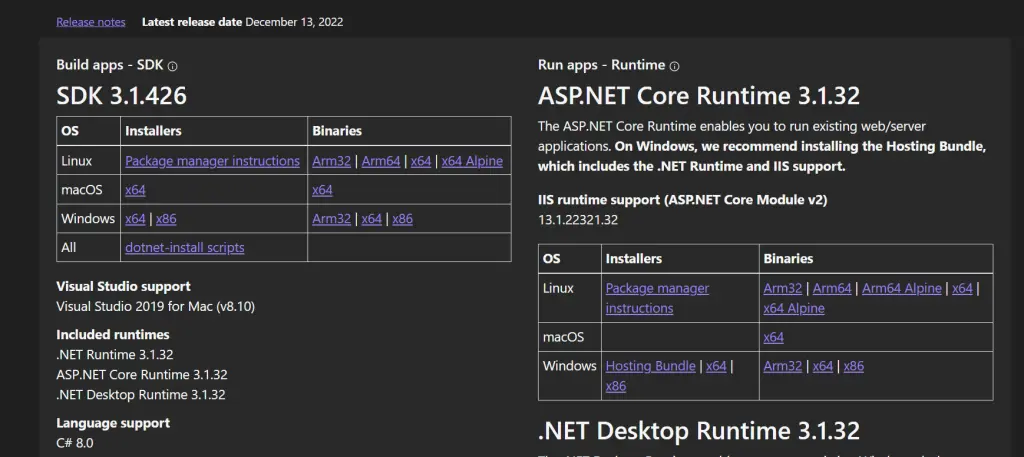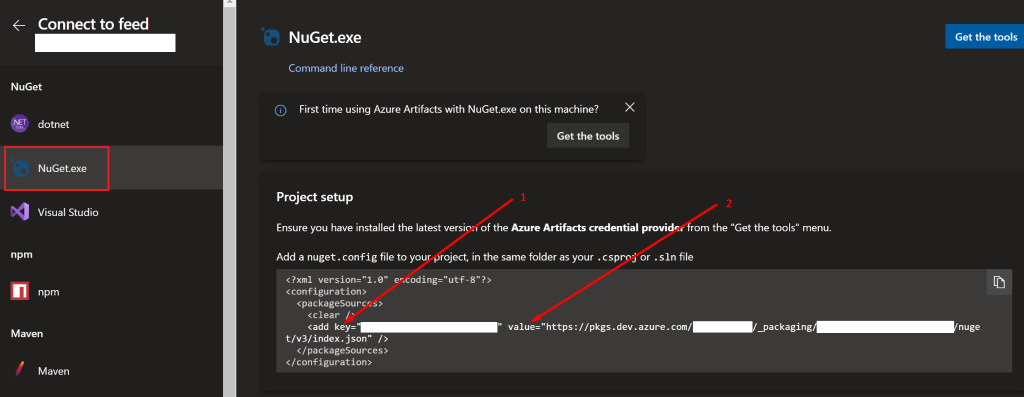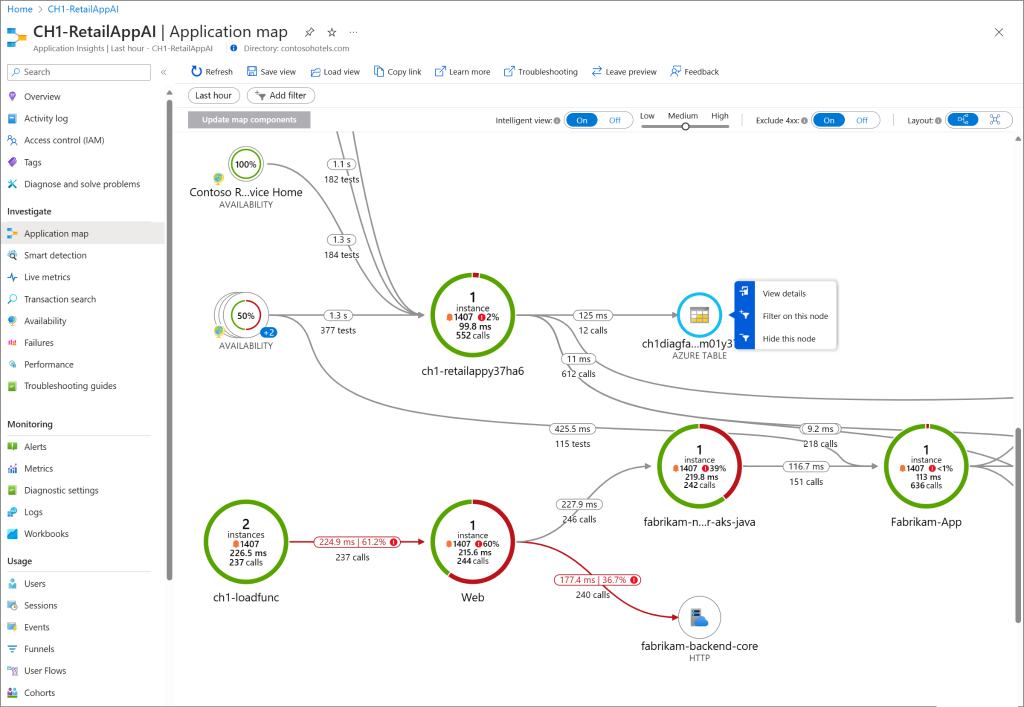- Overview
- Prepare Your System for .NET Framework to .NET Core Migration
- Review APIs
- Create .NET Standard Libraries
- Employ Model Binder
- Update Third-Party Libraries
- Assess Compatibility
- Create Test Coverage
- NET Framework to .NET Core Migration
- STEP 1: Assessment & Planning
- STEP 2: Choose Target .NET Core Version
- STEP 3: Download & Install .NET Core SDK
- STEP 4: Migrate Code & Dependencies
- STEP 5: Migrate NuGet Packages
- STEP 6: Migrate Your Data
- STEP 7: Migrate .csproj file
- STEP 8: Configure Your App for New Platform
- STEP 9: Test or Deploy your APP for .NET Core
- STEP 10: Monitoring & Maintenance
- Why Convert .NET Framework to .NET Core?
- Key Difference Between .NET Core & .NET Framework
- Technologies That are Not Supported by .NET Core
- Common Challenges with Expert Solutions
- NET Framework to .NET Core Migration Checklist
Overview
Rapid advancements in the tech environment impacts the companies. Migrating from .net framework to .net core is becoming essential for organizations looking to capitalize on enhanced performance and efficiency.
This guide offers a comprehensive overview of the migration process, designed to help you transition smoothly and effectively from .NET to .NET Core.
Prepare Your System for .NET Framework to .NET Core Migration
Converting .NET Framework to .NET Core is a significant undertaking that requires meticulous preparation. To ensure a successful and seamless transition, follow these measures to make your system ready for migration.
Review APIs
Start by closely examining your current use of platform-specific dependencies and APIs. Since .NET Core has a different set of APIs compared to .NET Framework, it’s essential to rework your code to use suitable cross-platform substitutes. This step is crucial for ensuring smooth interoperability and future maintainability of your applications.
Create .NET Standard Libraries
Before initiating the .NET to .NET core migration, consider creating a .NET Standard library. This approach allows for code compatibility between both frameworks, facilitating a gradual migration process. It enables code reuse and separation of platform-specific code, which simplifies the transition while maintaining compatibility with other .NET platforms.
Employ Model Binder
For desktop applications transitioning from dotnet framework to dotnet core, modifying how data is handled is necessary. Utilize the Model Binder, which is a powerful tool in .NET Core for automatically mapping data from HTTP requests to the parameters of action method calls. This adjustment is particularly important for applications that rely heavily on data input and processing.
Update Third-Party Libraries
Ensure that all third-party libraries you utilize are compatible before you convert project to .NET Core. Check for and implement updates or newer versions that support .NET Core. If compatibility issues arise with any library, seek alternatives or contact the vendor for support to resolve these issues.
Assess Compatibility
Before moving from .NET framework to .NEt core, evaluate your existing codebase’s compatibility with .NET Core. Utilize .Net migration tool such as the .NET Portability Analyzer to identify any APIs, libraries, or features that may not be supported by .NET Core. This analysis provides valuable insights into potential problems, allowing you to make necessary adjustments in advance.
Create Test Coverage
Make sure to set up a test suite to check that your system is working well after you convert from .NET framework to .NET core. Using automated tests is essential to catch any problems or changes that might have happened during the migration. These tests will ensure that all the important parts are checked and your system continues to work dependably.
NET Framework to .NET Core Migration
Upgrade from .NET framework to .NET core requires a process with important stages. It’s crucial to plan and carry out each step meticulously to guarantee the application’s performance in its setting. In this breakdown, we offer insights and hands-on advice for every phase.
STEP 1: Assessment & Planning
The first step in order to migrate .NET framework to .NET core is to assess your existing applications and plan the migration accordingly.
We recommend to install and run the Portability Analyzer

dotnet tool install -g Microsoft.DotNet.Portability.Analyzer
dotnet portability -f “<solution_path>”
This assessment from .NET core migration tool will guide the subsequent steps, ensuring that each phase of the migration is based on informed decisions.
STEP 2: Choose Target .NET Core Version
Choosing the right version to port .NET framework to .NET Core for your applications is critical. Factors to consider include the application’s requirements, the long-term support policies of .NET Core versions, and compatibility with other applications.

STEP 3: Download & Install .NET Core SDK
The next step in order to convert .NET framework to .NET core 6 is to download and install the appropriate .NET Core SDK. Installation commands are:
bash
# Windows
choco install dotnetcore-sdk
# Linux
sudo apt-get install dotnet-sdk-<version>

Expected result is successfully verifying the SDK installation with dotnet –version.
STEP 4: Migrate Code & Dependencies
The most technical parts of the migration is to migrate from .NET framework to .NET core, including project files and updating dependencies. The strategy is to update project files (.csproj) to the new SDK-style formats and address any dependency issues in order to convert dotnet framework to dotnet core.
xml
<Project Sdk=”Microsoft.NET.Sdk”>
<PropertyGroup>
<TargetFramework>netcoreapp3.1</TargetFramework>
</PropertyGroup>
</Project>
This step ensures that your code and its dependencies are aligned with .NET Core’s framework.
STEP 5: Migrate NuGet Packages
Ensuring that all your NuGet packages are compatible with .NET Core is essential for the functionality of your application. NuGet Package Manager is used to update and replace packages during porting .NET framework to .NET core.

STEP 6: Migrate Your Data
Data migration of .NET framework to core involves updating the data access layer to be compatible with .NET Core, which may include changing ORM (Object Relational Mapping) frameworks or updating existing ORM configurations.
C#
services.AddDbContext<ApplicationDbContext>(options => options.UseSqlServer(Configuration.GetConnectionString(“DefaultConnection”)));
STEP 7: Migrate .csproj file
Simplifying the .csproj files to match .NET Core’s streamlined project format is a key step in the migration from .NET framework to .NET core.
dotnet migrate [<SOLUTION_FILE|PROJECT_DIR>] [–format-report-file-json <REPORT_FILE>]
[-r|–report-file <REPORT_FILE>] [-s|–skip-project-references [Debug|Release]]
[–skip-backup] [-t|–template-file <TEMPLATE_FILE>] [-v|–sdk-package-version]
[-x|–xproj-file]
dotnet migrate -h|–help
The goal is to reduce complexity by removing unnecessary configurations and legacy settings.
STEP 8: Configure Your App for New Platform
Adjusting your application’s configuration to align with .NET Core’s framework and runtime environment is crucial. This might include revising appsettings.json and other configuration files to reflect the new settings.
json
“runtimeOptions”: {
“tfm”: “netcoreappX.Y” // Replace X and Y with the version of .NET Core you are using
}
It is one of the most important steps to convert project from .NET framework to .NET core.
STEP 9: Test or Deploy your APP for .NET Core
Testing is critical after migrating .NET framework to .NET core to ensure that the application functions as expected in its new environment.
Implement a comprehensive testing plan using tools like xUnit or NUnit to cover all aspects of the application.
STEP 10: Monitoring & Maintenance
After you successfully convert .NET framework to .NET core 6, continuous monitoring and maintenance are essential to address any emerging issues quickly. Tools such as Application Insights provide valuable insights into application performance and health.

Why Convert .NET Framework to .NET Core?
Migrating to .NET Core brings numerous benefits across various aspects of application development and deployment.
- Performance optimizing. .NET Core’s architecture is optimized for performance, making applications faster and more responsive.
- Cost efficiency. .NET Core can reduce operational costs by lowering demands on hardware through improved efficiency and performance.
- Scalability improvement. The lightweight nature of .NET Core makes it ideal for applications that need to scale dynamically in response to varying loads.
- Usage of containers & microservices architecture. .NET Core is built to operate seamlessly in modern architectures, including containers and microservices, providing flexibility in how services are deployed and managed.
- Leverage built-in cloud features. With native cloud integration, .NET Core simplifies the process of deploying and managing cloud-based applications.
- Security enhancement. Security is a prime focus in .NET Core, with ongoing updates and enhancements to safeguard applications against threats.
- Continuous support. Microsoft’s commitment to the continuous development of .NET Core ensures long-term support and innovation.
Organizations can build robust, scalable, and efficient applications after they convert .NET framework to .NET Core. They will be well-suited to the evolving demands of the digital landscape.
Key Difference Between .NET Core & .NET Framework
Understanding the fundamental differences between .NET Core and the .NET Framework is essential for anyone who wants to migrate .NEt to .NET core.
| Aspect | .NET Core | .NET Framework |
| Source Availability | Open-source | Proprietary |
| Platform Support | Universal (Windows, macOS, Linux) | Mainly Windows |
| Architecture | Lightweight and modular | Comprehensive and monolithic |
| Efficiency | Enhanced performance | Potential performance constraints |
| Development Approach | Focus on microservices and containerization | Traditional, monolithic development style |
| ApplicationDeployment | Optimized for cloud-native and containers | Geared towards traditional desktop/server setups |
| Programming Languages | Extensive (C#, F#, VB.NET, and others) | Primarily C# and VB.NET |
| Ecosystem | Expanding with broad cross-platform support | Centered around Windows-specific capabilities |
| Version Management | Streamlined and predictable | Complex |
| Backward Compatibility | Adaptation for legacy code may be necessary | Strong compatibility with existing Windows apps |
| Development Tools | Modern tooling designed for today’s DevOps needs | Older toolset with limited DevOps integration |
| Community Involvement | Vibrant open-source community engagement | More restricted due to proprietary status |
This detailed comparison highlights the advantages of .NET Core, particularly in terms of modularity, performance, and the ability to adapt to modern development practices and environments. Understanding these differences is crucial for developers and organizations planning to change .NET framework to .NET Core.
Technologies That are Not Supported by .NET Core
When migrating from .NET Framework to .NET Core, it’s essential to understand that certain older technologies are not supported. Here’s a concise overview of some key technologies absent in .NET Core, along with suitable alternatives.
- Web forms. They are based on a stateful model and server-side controls, incompatible with .NET Core’s stateless approach. The alternative is to migrate to ASP.NET Core MVC for a modern, testable model-view-controller architecture, or consider using Blazor for interactive web UIs.
- Windows communication foundation. WCF is not fully supported due to .NET Core’s emphasis on HTTP/REST APIs. Use gRPC for building high-performance, cross-platform RPC services as a robust alternative to WCF.
- Workflow foundation. WF’s workflow management capabilities are absent in .NET Core. Explore open-source libraries like Elsa Workflows, which can provide similar functionality within .NET Core’s environment.
- Windows forms. It is available in .NET Core but lacks full feature parity with its .NET Framework implementation. Assess and possibly redesign Windows Forms applications to ensure compatibility with .NET Core, particularly when using advanced controls or third-party components.
- Enterprise services. Features like COM+ services and distributed transactions are not supported. For distributed transactions, look to open-source libraries or services that offer similar functionalities. For security, adopt .NET Core’s more flexible security models.
.NET Framework to .NET core migration challenges may require significant architectural changes, especially for applications reliant on technologies that are not supported in the newer framework. Choosing modern alternatives not only addresses these gaps but also enhances application scalability, performance, and maintainability.
Common Challenges with Expert Solutions
Upgrade .NET Framework to .NET Core (now .NET 5, 6, and beyond) can present a variety of challenges, particularly as you adapt older applications to a modern, cross-platform environment. Here are some common hurdles during migrate to .NET core and their expert-recommended solutions:
| Challenges | Description | Possible solution | Code examples |
| Compatibility Issues | Existing code, third-party libraries, and dependencies may not be compatible with .NET Core. | Use tools like the .NET Portability Analyzer to assess dependencies and identify compatibility issues. Look for alternative libraries or consider refactoring code as necessary. | dotnet portability analyze MyProject.csproj |
| Platform Difference | .NET Core is cross-platform, which may introduce differences in APIs and features, especially those that were Windows-specific in .NET Framework. | Implement conditional compilation and abstraction layers to manage platform-specific code. Opt for cross-platform alternatives to replace Windows-only features. | Console.WriteLine(“Running on Windows”); #elseConsole.WriteLine(“Running on a non-Windows platform”); #endif |
| Legacy Codebase | Migrating large and complex codebases can be daunting. | Adopt an incremental migration strategy. Start by transitioning less critical components or modules first, which minimizes risk and allows for gradual adaptation of the entire application. | public class LegacyModule public void DoSomethingLegacy()public class NewModule public void DoSomethingNew |
| Lack of Third-Party Support | Some third-party libraries and tools may not yet support .NET Core. | Contact vendors for support updates or replacements if you convert .NET to .NET core. Also, explore community-supported alternatives, or consider developing custom solutions where necessary. | if (!LibraryA.IsSupportedOnCore) { Console.WriteLine(“LibraryA is not supported on .NET Core. Using LibraryB instead.”); var libraryB = new LibraryB(); libraryB.DoSomethingSimilar(); |
| API and Framework Difference | .NET Core differs in its API surface and may lack some features found in the .NET Framework. | Carefully review API differences and prepare for necessary code modifications. In some cases, functionality may need to be reimplemented with the alternatives provided by .NET Core. | catch (MissingMemberException) { Console.WriteLine(“The GetLegacyProperty method is not available.”); var legacyData = MyObject.GetNewData(); |
| Dependency Injection | .NET Core encourages the use of built-in dependency injection, which may necessitate changes to existing code patterns. | Plan the adoption of dependency injection and refactor code gradually. Begin with smaller, less complex components to simplify the convert .net framework to core. | public void ConfigureServices(IServiceCollection services) { services. AddTransient<IMyService, MyService>();{ private readonly IMyService _myService; |
| Deployment Challenges | Deploying .NET Core applications, especially in containerized environments, can be different from traditional .NET Framework deployments. | Embrace modern DevOps practices, invest in containerization, and set up automated deployment pipelines to enhance efficiency and reliability in processes of how to convert .net framework to .net core and deploy it. | <ItemGroup> <Content Include=”**\*.xml” Exclude=”bin\**\*;obj\**\*” CopyToOutputDirectory=”PreserveNewest” /></ItemGroup> |
.NET framework to .NET Core migration can significantly modernize your software architecture, making it more scalable, maintainable, and efficient. While the migration process involves overcoming a number of challenges, the solutions provided above will help you navigate these challenges effectively. By carefully planning and implementing these strategies, you can ensure a successful transition from .NET framework to .NET Core, positioning your applications to take full advantage of the latest advancements in technology.
NET Framework to .NET Core Migration Checklist
If you want to convert .NET framework project to .NET Core, then concluding your effort with a comprehensive checklist ensures that no critical step is overlooked.
- Verify application compatibility with .NET Portability Analyzer.
- Choose the appropriate .NET Core version.
- Ensure the .NET Core SDK is installed and configured before you convert to .NET Core.
- Update and simplify project files.
- Confirm compatibility and functionality of all NuGet packages.
- Adapt data access code and configurations for .NET Core.
- Revise application configurations for the new platform.
- Execute detailed testing across all components after you convert dotnet framework to dotnet core.
- Deploy the application in the new environment.
- Establish monitoring frameworks and maintenance protocols.
By following this detailed guide, you can confidently migrate from .NET framework to .NET Core, leveraging the latest advancements in the platform to enhance your software solutions.










